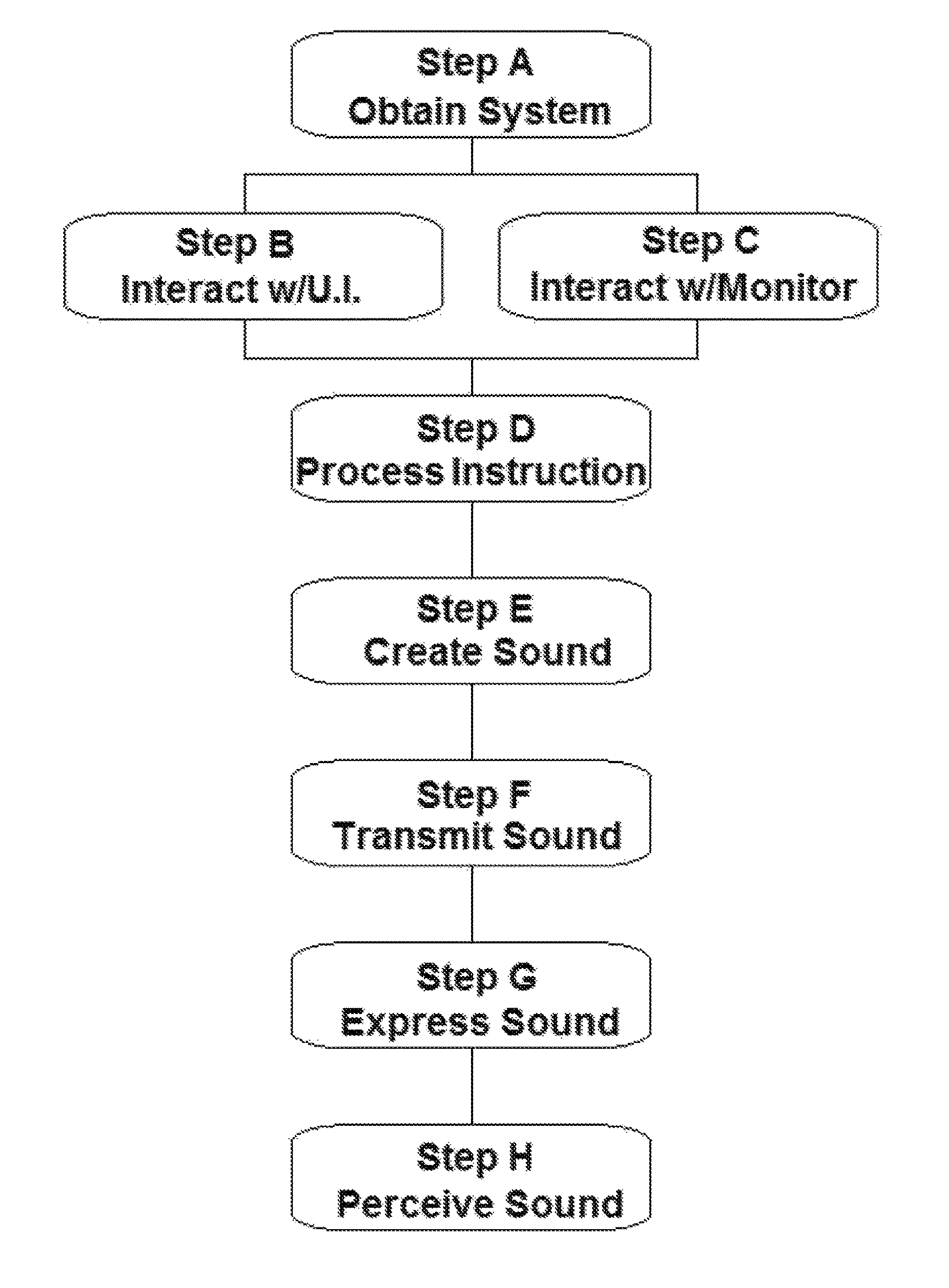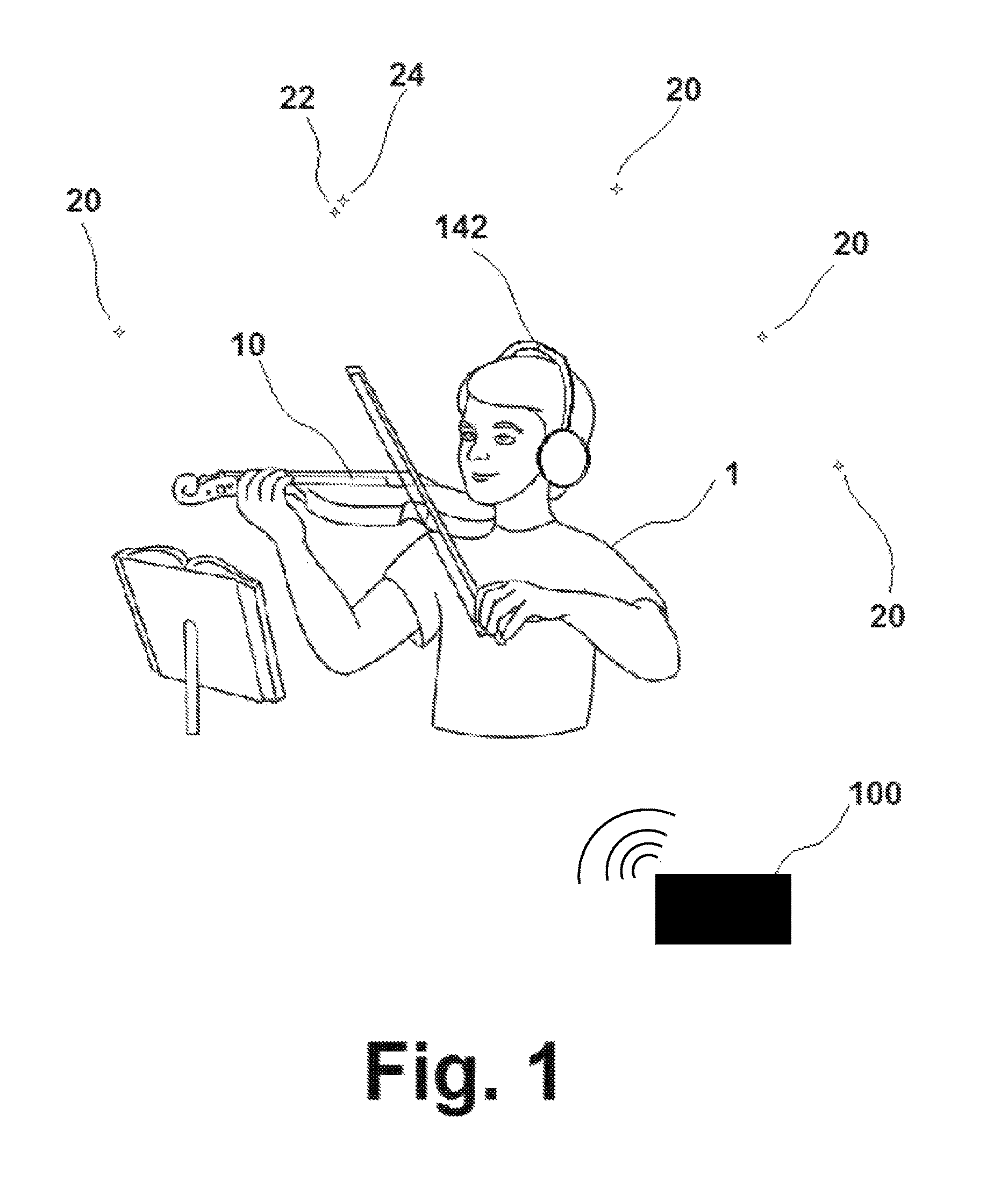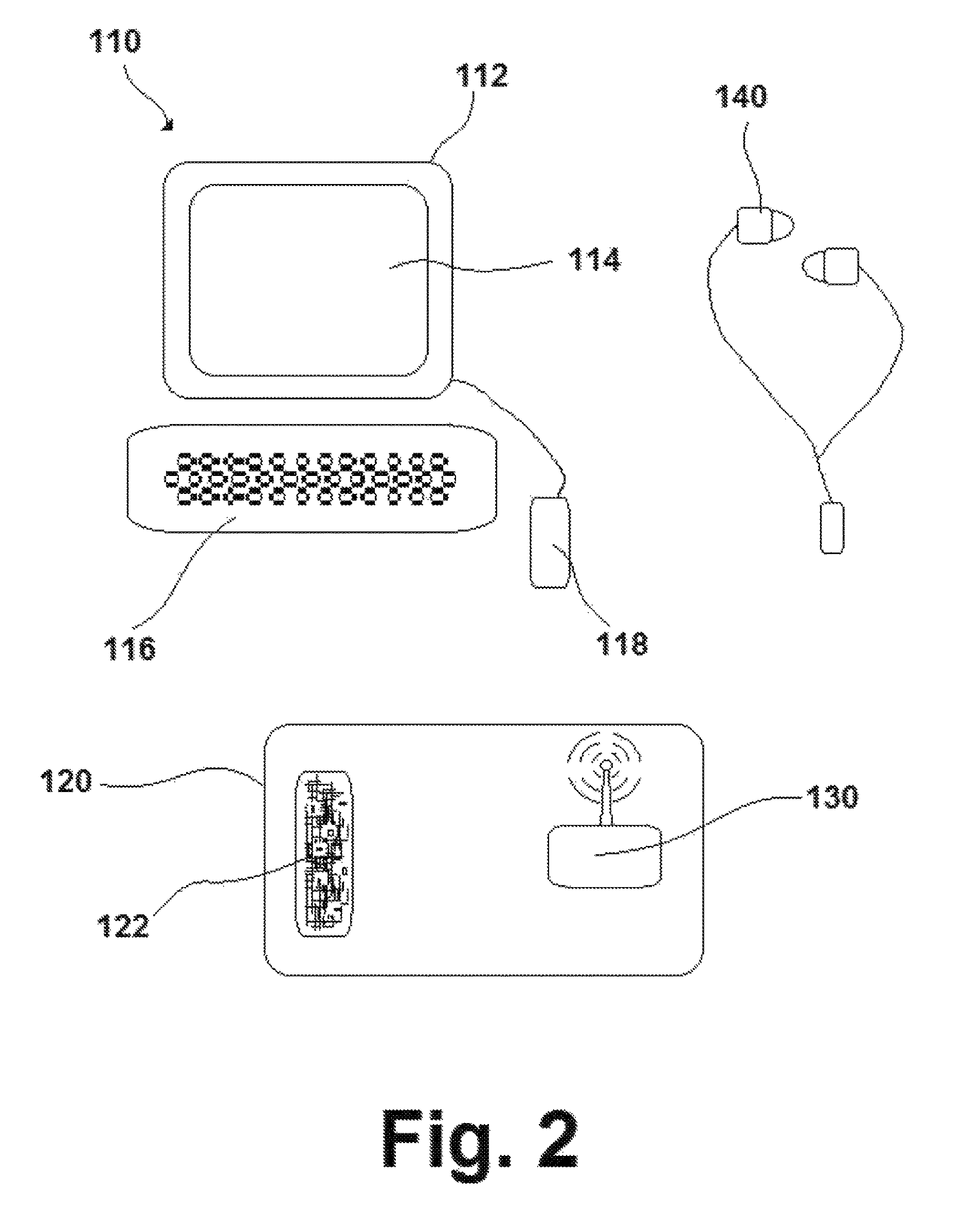Method of music instruction
a music instruction and method technology, applied in the direction of instruments, pre-selected time interval producing apparatus, music, etc., can solve the problems of not assisting in the development of precise perceptions by the musician of other fundamentals, and the limitations of existing metronomes, so as to improve perception and cognition.
- Summary
- Abstract
- Description
- Claims
- Application Information
AI Technical Summary
Benefits of technology
Problems solved by technology
Method used
Image
Examples
Embodiment Construction
[0040]The method of music instruction disclosed in the present invention requires the use of a specialized system 100 capable of producing two or more distinct sounds 20 perceivable by the user 1, with each of the two or more sounds 20 perceived by the user 1 as originating in a specific location in three-dimensional space relative to the user 1. See FIG. 1. For example, one of the sounds 20 produced by the system 100 may be perceived by the user 1 as being located directly in front of the user 1, while another of the sounds 20 produced by the system 100 may be perceived by the user 1 as being located off to the left of the user 1. The system 100 itself is comprised of a user interface 110, a sound generator 120, a transmitter 130, and a monitoring device 140. See FIG. 2.
[0041]The user interface 110 may be any user interface 110 known in the art capable of allowing a person to provide instruction to the system 100 regarding characteristics of how the two or more sounds 20 are to be ...
PUM
 Login to View More
Login to View More Abstract
Description
Claims
Application Information
 Login to View More
Login to View More - R&D
- Intellectual Property
- Life Sciences
- Materials
- Tech Scout
- Unparalleled Data Quality
- Higher Quality Content
- 60% Fewer Hallucinations
Browse by: Latest US Patents, China's latest patents, Technical Efficacy Thesaurus, Application Domain, Technology Topic, Popular Technical Reports.
© 2025 PatSnap. All rights reserved.Legal|Privacy policy|Modern Slavery Act Transparency Statement|Sitemap|About US| Contact US: help@patsnap.com



